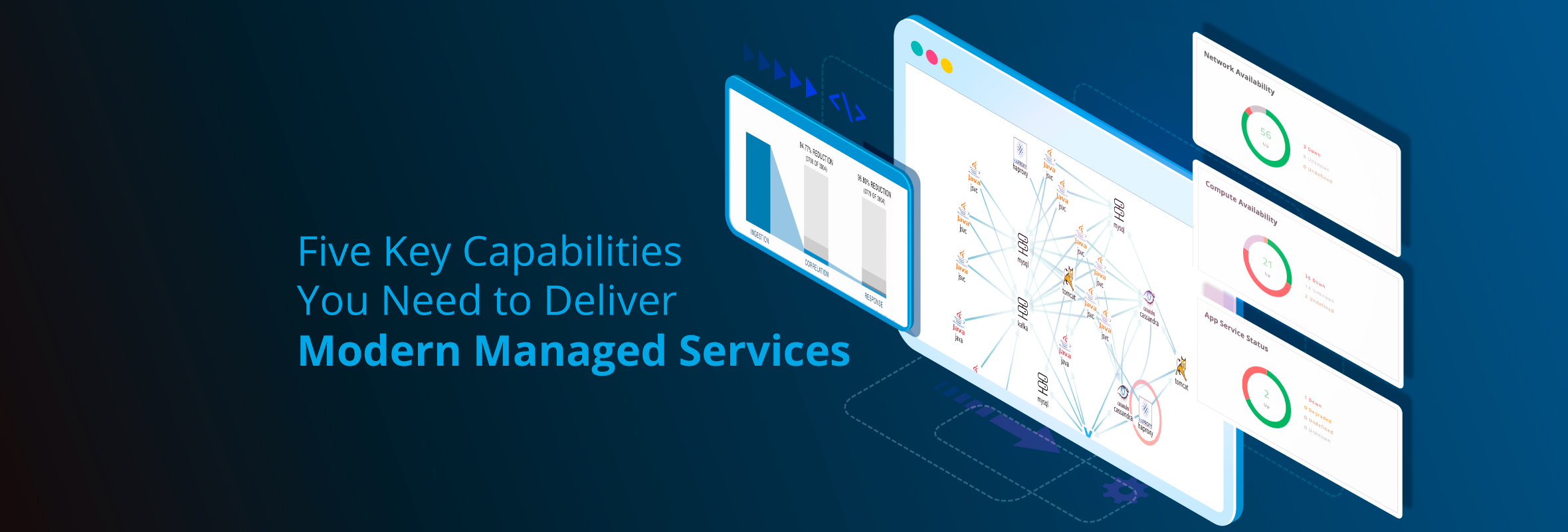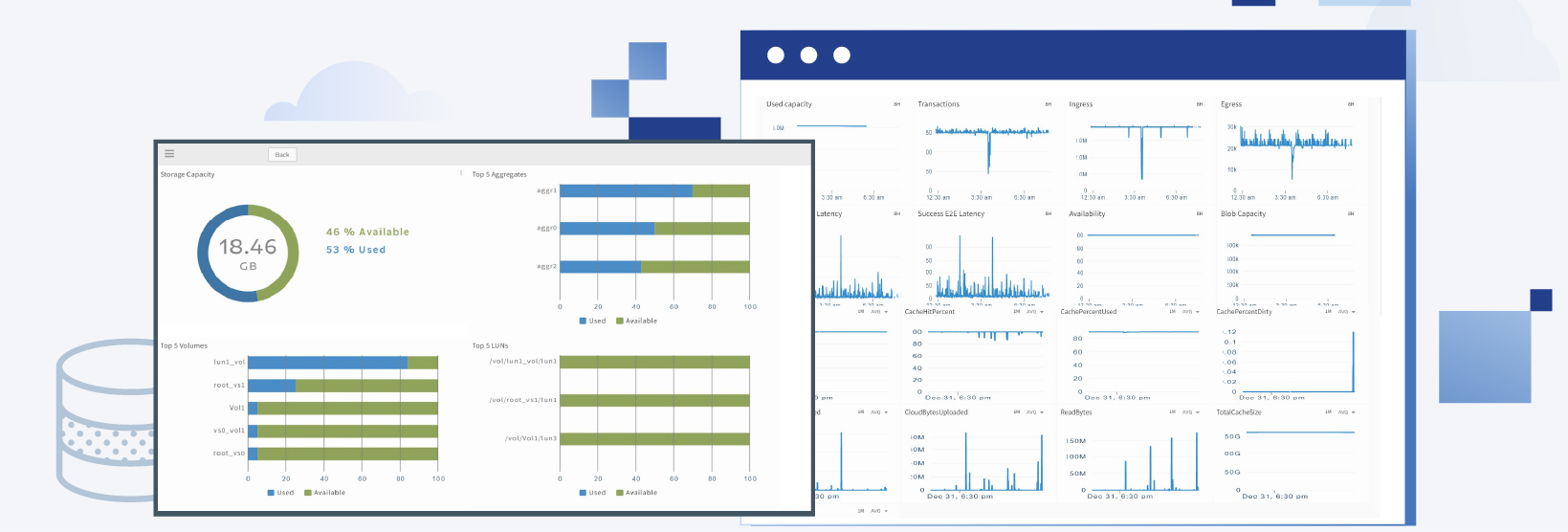The following first appeared in Cloud Tech News.
The threat of digital disruption has forced senior executives and technology leaders to rethink business models, data assets, and distribution channels, in order to create innovative products and services that will delight customers and overcome nimbler competitors. Over the last decade, enterprises have completely transformed the way they build, deploy, manage, and maintain mission-critical services as a response to increasing digitization.
Developers have responded to the enterprise transformation challenge by adopting new technologies and practices including the consumption of public cloud services, the embrace of agile and DevOps for rapid software delivery, the shift from monolithic development patterns to microservices development, and machine learning models for process innovation.
IT operations teams have historically ensured the availability and performance of enterprise workloads by minimizing change and avoiding disruption. Given the demands of digital business, digital operations teams will need to take advantage of established and emerging technology trends to drive product momentum, deliver compelling customer experiences, and ensure long-term corporate survival. In 2020, IT operations teams will need to embrace these five shifts to scale up innovation and respond effectively to digital disruption:
#1 How IT Operations Can Stay Relevant in a DevOps World
At the 2009 Velocity conference, a session on 10+ Deploys Per Day: Dev and Ops Cooperation at Flickr by John Allspaw and Paul Hammond showed how enterprises could accelerate release velocity with automated infrastructure tooling, continuous integration and deployment processes, and shared metrics. This Velocity talk ignited the DevOps movement, calling for a new model of trust, collaboration, and accountability between Dev and Operations teams.
A decade later, DevOps has broad mainstream adoption, with site reliability engineers and DevOps specialists being the top earners in Stack Overflow’s 2019 Developer Survey. DevOps is key to enabling business agility and minimizing friction, with Gartner predicting that 90 percent of the top 100 global companies will slash operational inefficiencies with DevOps practices by 2020. Meanwhile, a recent McKinsey study found that few business executives believe “their IT functions make meaningful contributions in areas that promote strong business performance.”
These trends might ensure that DevOps teams are the ones calling the shots with active participation in digital experience products leading to larger organizational budgets and greater organizational clout. Does this mean that IT operations will have to stay content managing legacy application and infrastructure portfolios (aka ‘keeping the lights on’)?
|
|
Takeaway. IT operations will need to combine their traditional focus on reliability, resilience, security, and efficiency with greater attention to release velocity, continuous improvement, and customer-centricity. Innovations in IT operations can support digital transformation initiatives and assure that the new speed of DevOps won’t put the business at risk. |
#2 AIOps: Not Such an Old-School Incident Management Workflow
A recent IDC study finds that IT operations teams are the biggest buyers of artificial intelligence tools for rapid pattern recognition, seamless incident collaboration, and faster issue resolution. In 2020, it is time to move away from siloed and reactive to proactive and preventive incident management using the power of machine learning and data science. A modern AIOps solution can drastically reduce the human time spent identifying, logging, categorizing, prioritizing, responding, and closing incidents by:
- Analyzing and processing a wide variety of events across different monitoring tools so that duplicate and noisy alerts are automatically suppressed.
- Using machine data intelligence to get ahead of alert storms, speed up root cause(s) analysis, and reduce service disruptions.
- Sending real-time, contextual alerts to on-call service delivery teams with bidirectional integrations for IT service management tools.
- Addressing routine incidents at scale using automated remediation so that human operators can focus on high-value business projects.
|
|
Takeaway. Digital operations teams should start piloting AIOps initiatives to understand how machine learning-powered event management can reduce the human time spent on incident detection, first response, alert prioritization, and root cause analysis. |
#3 New Ways to Control the Chaos of Multi-Cloud Management
Flexera’s 2019 State of the Cloud Report found that 84 percent of IT leaders use five different cloud providers as part of their enterprise cloud strategy. Given that AWS alone has 170+ unique services across 23 product categories, it is no easy task managing different cloud services across leading cloud platforms. So, what are the driving forces behind multi-cloud adoption?
Given the dominance of AWS which has a 35% market share in the cloud infrastructure services market, CIOs are looking to work with other cloud providers like Microsoft and Google to preempt fears of cloud lock-in. The other reason for selecting multi-cloud platforms is 451 Research’s best execution venue strategy of picking the right cloud environment for a specific type of business workload so that IT teams can optimize for both performance and cost.
Here are three factors that cloud teams will need to carefully consider while deploying a multi-cloud enterprise strategy:
- Resource Complexity. Cloud infrastructure teams will need to select the right instance type for their workload requirements across thousands of cloud SKU instances. Picking and optimizing right-sized instances is an ongoing task and requires difficult tradeoffs based on architecture, demand, performance, resilience, and cost.
- Multi-Cloud Monitoring. While there are plenty of native monitoring tools like Amazon CloudWatch, Azure Monitor, and Google Stackdriver, these solutions are best employed for cloud-provider specific insights. Enterprises should either invest either in open source tooling (Prometheus/Graphite, Grafana) or third-party monitoring tools that can easily integrate, capture, and present insights from multi-cloud environments.
- Embed FinOps Thinking in Your Cloud Center of Excellence. Optimizing cloud costs across instance types and pricing models (on-demand, dedicated, spot, and reserved) is a complex exercise. The emerging discipline of FinOps helps enterprises better plan and predict cloud budgets by bringing together best practices for optimizing cloud spending. FinOps offers a new procurement model that emphasizes shared accountability for cloud financial management across technology, finance, and business teams so that enterprises getter a better return for their cloud investments.
|
|
Takeaway. Enterprise IT teams should learn from FinOps pioneers on how to make the right tradeoffs between cost, performance, and resilience for cloud services. Cloud architects should experiment with both open source and commercial monitoring tools to understand how they can drive real-time visibility and ensure faster incident response for multi-cloud operations. |
#4 Cloud Transforms the Enterprise Datacenter
Corporate datacenters are increasingly taking on attributes of public cloud infrastructure with on-demand consumption and pay-per-use pricing models. Here are three trends that are a clear indication of how datacenters are evolving in the cloud era:
- Hybrid Cloud Models. For a long while, public cloud platforms refused to acknowledge that certain workloads could only operate on-prem due to latency, security, or compliance requirements. Cloud providers have now openly embraced the hybrid cloud value proposition, with Microsoft launching Azure Stack in 2017, followed by AWS Outposts in 2018, and Google Anthos in 2019. Hybrid cloud solutions allow enterprises to run workloads within their datacenters and not worry about day-to-day management while letting cloud providers breach the final frontier of datacenter gravity.
- Consumption-Based Infrastructure Models. Enterprises can leverage a host of innovative solutions (HPE GreenLake, Dell Flex on Demand, Lenovo TruScale Infrastructure Services, and Cisco Open Pay) that let them tap into flexible payment models for datacenter resources. IT teams can defer capital expenditures, work with the latest hardware, track real-time usage, and outsource management to the OEM or a managed service provider, allowing them to purely focus on business outcomes.
- Write Once, Run Anywhere with Orchestration Engines. Container orchestration engines like Kubernetes, Docker Swarm, and Apache Mesos have exploded in popularity as they allow IT teams to run cloud-native services anywhere and offer a consistent management framework for building and scaling distributed applications. Cloud-native services can be deployed across datacenter and cloud environments using container orchestration engines, ensuring a high degree of portability, faster release velocity, and better operational control with abstracted infrastructure.
|
|
Takeaway. Datacenters are ripe for disruption and IT teams should outsource the heavy lifting involved in designing, deploying, monitoring, and maintaining enterprise IT infrastructure. Datacenter managers should work with both hyperscale and OEM providers to tap into the power and flexibility of hybrid cloud and consumption-based utility models. |
#5 How to Tackle the Looming Skills Crisis
Research firm IDC expects that 30% of IT roles involving emerging technology skills will remain unfilled through 2022. A recent survey found that 94% of IT decision-makers are finding it somewhat difficult, difficult, or very difficult to hire DevOps professionals, cloud native developers, and multi-cloud operators. Disruptive technology trends have ensured that IT operations teams have to constantly upgrade their skills to remain relevant.
- The popularity of cloud native infrastructure requires a new set of skills across lifecycle automation and configuration, observability and analysis, and security and compliance for driving reliable and scalable applications.
- The adoption of AIOps solutions needs IT practitioners who are familiar with advanced statistical techniques and can combine data-driven insights and human intuition to reduce application downtime and ensure a faster recovery.
|
|
Takeaway. CIOs will need to invest heavily in skills development programs to attract and retain employees. IT leaders will use a mix of internally run programs, hands-on learning, and external providers to counteract the skills gap in a competitive job market. |
Conclusion
In a world where change is the only constant, IT operations will need to become increasingly proactive and dynamic to meet the needs of the business. Technology operations management will emerge as a renewed discipline, where innovation is only limited by imagination.
Next Steps:
- Calculate your cost savings by eliminating tools and switching to OpsRamp.
- Schedule a custom demonstration to understand how your organization can benefit from a modern ITOM platform.
- Follow us on Twitter, LinkedIn, and YouTube.







